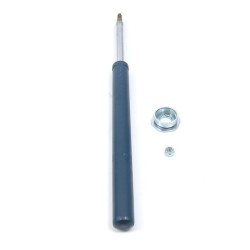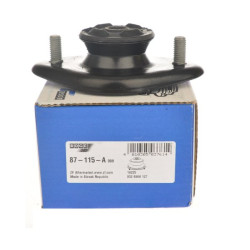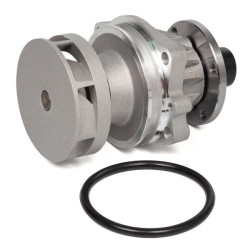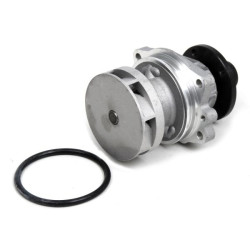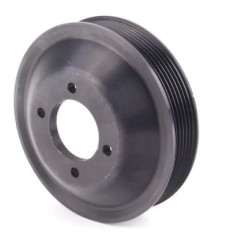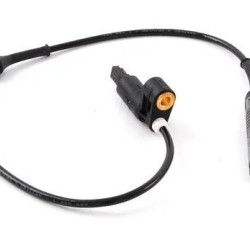Bmw 320i Spare Parts

Bmw 320i Series Spare Parts and maintenance products can be selected to access detailed technical data and the 3 Series spare parts you are looking for.
BMW 320i Model and Features: Historical Development from the First Model to Present and Body Codes
The BMW 320i is considered one of the most iconic models of BMW's 3 Series family. Representing the sporty driving pleasure, elegant design, and engineering quality of the 3 Series, the BMW 320i has shown many innovations and developments over the years. Always offering a dynamic driving experience with its gasoline engine, the 320i has been optimized to enhance driving pleasure and performance in every generation. In this article, we will examine the historical development of the BMW 320i, its engine structure, and the body codes it has been known by in which years.
Historical Development of the BMW 320i
The BMW 320i was first introduced in 1975 and has since gained great fame worldwide as one of BMW's popular models. The 320i has been equipped with modern technologies and improved engine options in every generation. This model has become one of the symbols of BMW's global success by offering performance and comfort in the sports sedan segment.
First Generation (E21) - 1975-1983
- Introduction: The BMW 320i was launched in 1975 with the E21 body code. This model reflected the brand's understanding of sporty driving and luxury design as one of the first models offered in BMW's compact sedan segment.
- Engine: The first generation BMW 320i was equipped with a 2.0-liter four-cylinder gasoline engine. This engine produced 125 horsepower and was combined with a manual transmission to provide a dynamic driving experience.
- Design: The E21 320i had a design that stood out with its sharp and sporty lines. Notable design features of the vehicle included round headlights, a wide kidney grille, and a long hood.
- Features: In this period, where modern safety features such as ABS and airbags were not yet available, the BMW 320i stood out with its mechanical safety features and advanced driving dynamics.
Second Generation (E30) - 1982-1994
- Development: BMW introduced the second generation 320i with the E30 body code in 1982. The E30 is considered one of BMW's most iconic bodies, and significant improvements in performance and comfort were offered with this model.
- Engine: The second generation BMW 320i was equipped with a 2.0-liter inline six-cylinder engine. This engine produced 125-130 horsepower and was offered with both manual and automatic transmission options.
- Design: The E30 had more angular lines than the previous generation and gained a more modern appearance. Additionally, different body types such as coupe and cabriolet were offered in this generation.
- Features: The E30 generation began to be equipped with advanced safety features such as ABS and airbags. Additionally, a sporty suspension system and electric equipment were also included in this generation.
Third Generation (E36) - 1990-2000
- Development: The third generation BMW 320i was introduced in 1990 with the E36 body code. This model combined BMW's sporty driving characteristics with a more modern design.
- Engine: The third generation BMW 320i was offered with a 2.0-liter inline six-cylinder engine that produced 150 horsepower. An engine optimized for both performance and fuel efficiency was provided.
- Design: The E36 had more aerodynamic and smoother lines. In accordance with the aerodynamic trends of the time, the angular lines transformed into a rounder and more fluid form.
- Features: This generation offered modern features such as dual-zone climate control, electric seats, ABS, and advanced airbag systems.
Fourth Generation (E46) - 1998-2006
- Development: The fourth generation BMW 320i was launched in 1998 with the E46 body code. This model offered a 3 Series equipped with more luxury and technological innovations.
- Engine: The fourth generation BMW 320i was equipped with a 2.2-liter inline six-cylinder engine that produced 170 horsepower. This generation provided higher performance and lower fuel consumption with advancements in engine technology.
- Design: The E46 had a modern and aggressive design language. It stood out with wide headlights, an aerodynamic body structure, and a wider kidney grille.
- Features: This generation offered luxury features such as electric seats, xenon headlights, advanced sound systems, and large infotainment screens. Additionally, ESP and more advanced ABS systems became standard.
Fifth Generation (E90/E91/E92/E93) - 2005-2013
- Development: In 2005, BMW introduced the fifth generation 320i model with the E90/E91/E92/E93 body codes. This generation was seen as a significant step both aesthetically and technologically.
- Engine: This generation, which used a 2.0-liter four-cylinder engine, offered engine options ranging from 150 to 170 horsepower. Newer fuel injection systems were used to increase efficiency.
- Design: The E90 series had sharper lines and a sporty appearance. Additionally, LED headlights and more modern lighting technologies began to be used with this generation.
- Features: Innovations such as the iDrive infotainment system, dual-zone automatic climate control, adaptive headlights, and advanced driver assistance systems were included in this generation.
Sixth Generation (F30/F31/F34) - 2011-2019
- Development: In 2011, BMW introduced the sixth generation 320i model with the F30 body code. This generation was made more environmentally friendly and efficient with BMW’s EfficientDynamics technologies.
- Engine: The F30 320i was offered with a 2.0-liter turbocharged four-cylinder engine. This engine produced 184 horsepower and 270 Nm of torque. The turbo engine optimized fuel consumption while enhancing performance.
- Design: The F30 had a more aggressive and modern exterior design. The wide kidney grille, sharp lines, and aerodynamic structure became the defining features of this generation.
- Features: This generation offered features such as adaptive LED headlights, a head-up display, advanced driver support systems, large infotainment screens, and high-quality interior materials.
Seventh Generation (G20) - 2019-Present
- Development: The seventh generation BMW 320i, introduced in 2019, was launched with the G20 body code. This model offers BMW’s latest technologies and innovative driving dynamics.
- Engine: The G20 BMW 320i is offered with a 2.0-liter four-cylinder turbocharged engine. This engine produces 184 horsepower, provides 300 Nm of torque, and is combined with an eight-speed automatic transmission.
- Design: The G20 series features a more aggressive design with sharp lines. The wide kidney grille, LED headlights, and muscular lines reinforce the sporty stance of this model.
- Features: The G20 generation offers features such as adaptive suspension, laser headlights, wireless charging, driver assistance systems, and a digital instrument panel. Additionally, this generation has transitioned to BMW's hybrid technologies.
The Legacy of the BMW 320i
The BMW 320i has proven itself over the years as one of BMW's most iconic models that offers performance and comfort together. This model, which provides high performance, fuel efficiency, and driving pleasure, holds an important place in the sports sedan segment. Continuously evolving and technologically enriching with each generation, the BMW 320i has become a model that showcases BMW's engineering skills by offering luxury and sportiness together.
Conclusion
Since its first introduction in 1975, the BMW 320i has renewed and developed itself in every generation by combining performance and technology. This model, which offers drivers a powerful and enjoyable driving experience with its gasoline engines, holds an important place in the automotive world as a symbol of BMW's sports sedan tradition.
 Türkçe
Türkçe
 English
English
 Русский
Русский

